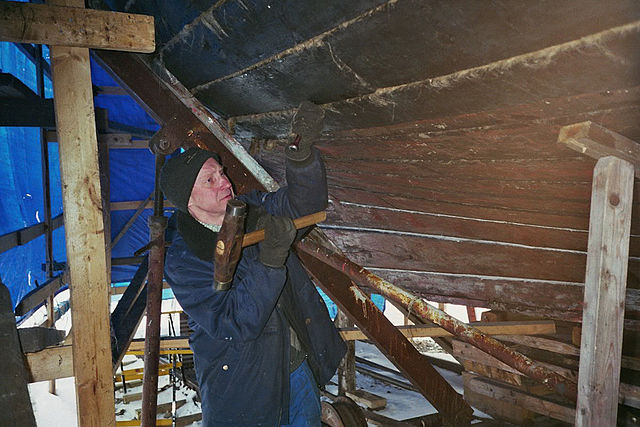Lashed-lug boats are ancient boat-building techniques of the Austronesian peoples. It is characterized by the use of raised lugs on the inner face of hull planks. These lugs have holes drilled in them so that other hull components such as ribs, thwarts or other structural components can be tied to them with natural fiber ropes. This allows a structure to be put together without any metal fastenings. The planks are further stitched together edge-to-edge by sewing or using dowels ("treenails") unto a dugout keel and the solid carved wood pieces that form the caps for the prow and stern. Characteristically, the shell of the boat is created first, prior to being lashed unto ribs. The seams between planks are also sealed with absorbent tapa bark and fiber that expands when wet or caulked with resin-based preparations.
Planks from one of the balangay burial boats (c.320–1250 CE) in the Butuan National Museum in the Philippines showing the holes on the edges where dowels were inserted
Nydam boat (Denmark), showing frames which are lashed to cleats (lugs) on the hull planking
Boat building is the design and construction of boats and their systems. This includes at a minimum a hull, with propulsion, mechanical, navigation, safety and other systems as a craft requires.
The schooner Appledore II under construction
Damaged boat mid-reconstruction; carvel planking partially removed
Caulking irons and oakum
Caulking a wooden boat






